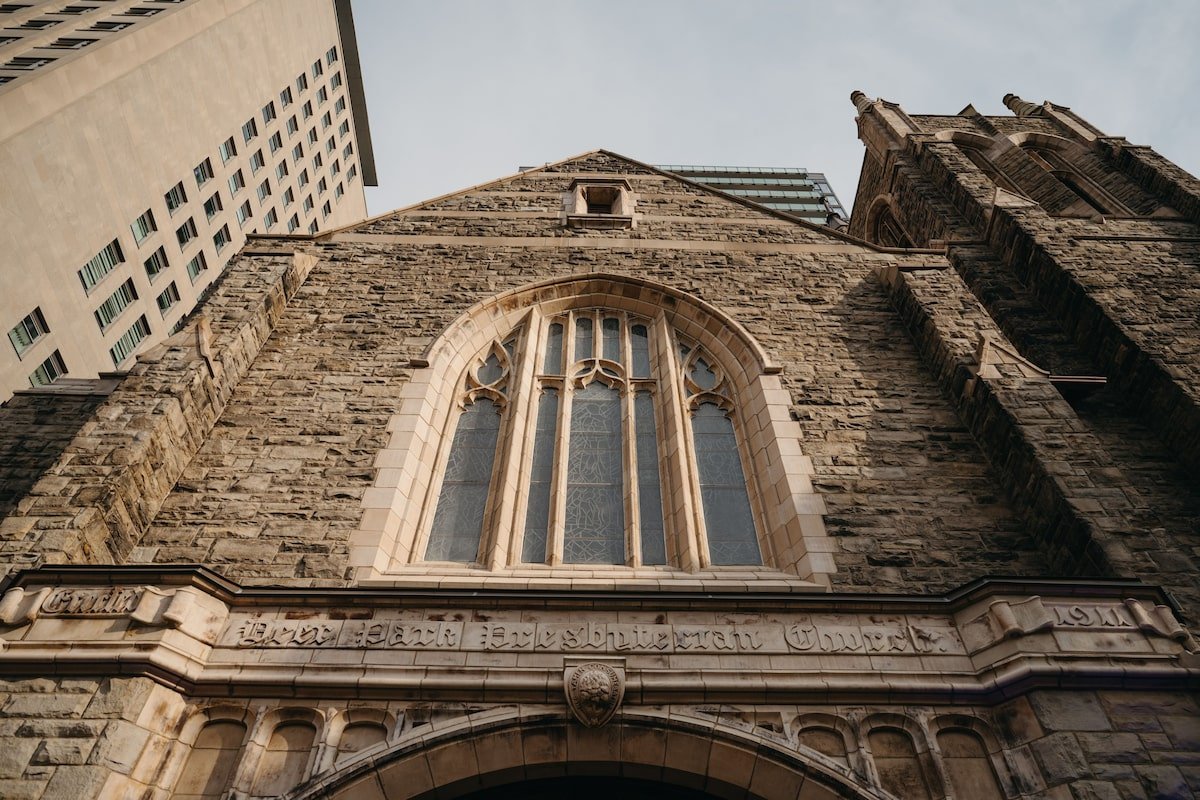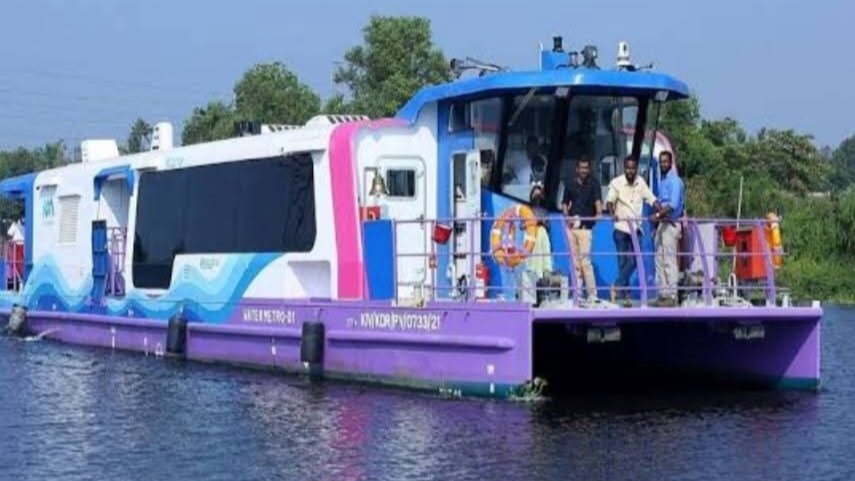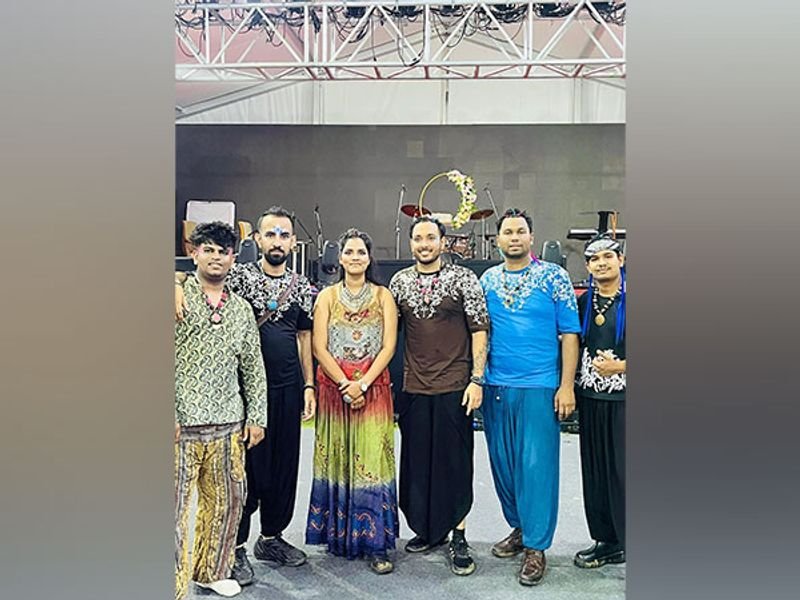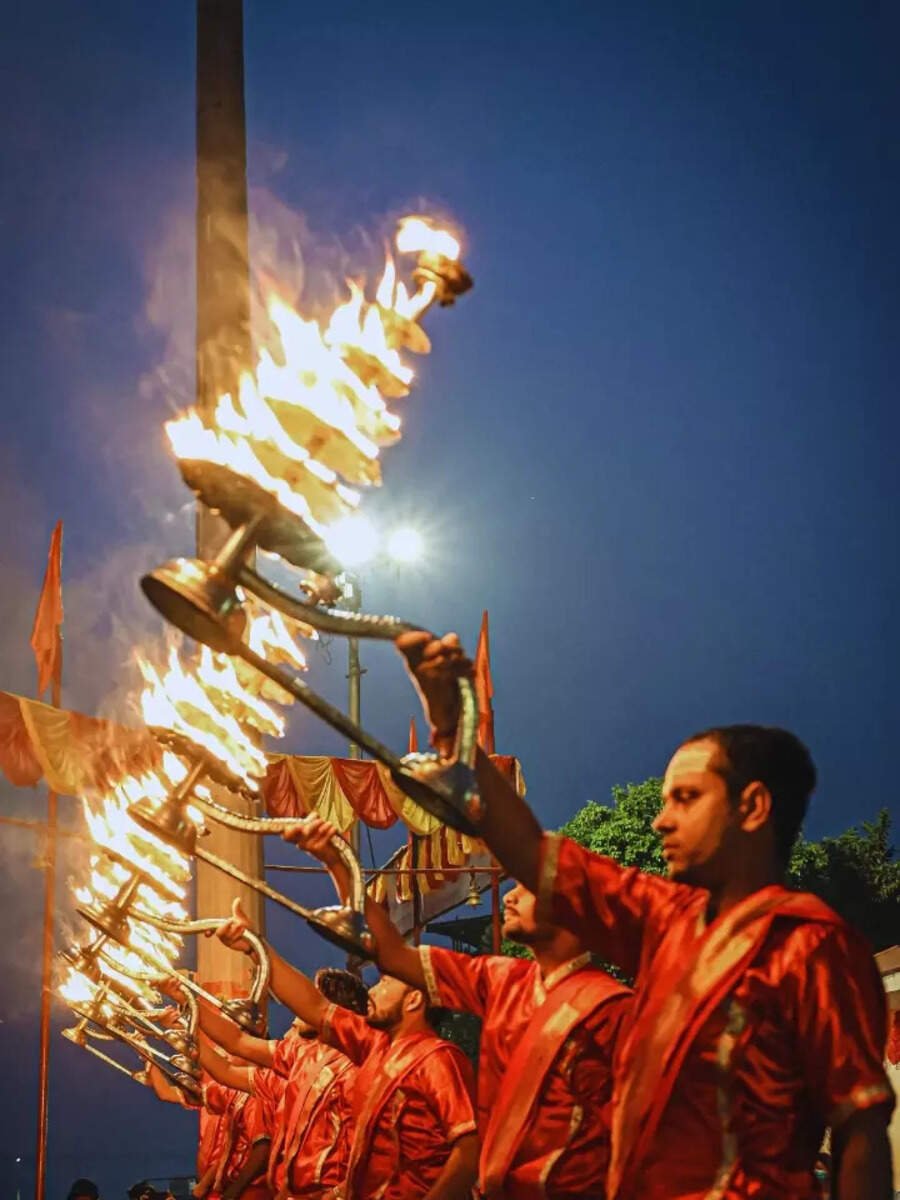Spiritual Travel
Sacred spaces become modern places as churches get second lives

A former 125-year-old church in midtown Toronto is set to become a chic event space and dining destination. Opening in February, The Imperial Toronto will include five luxurious indoor and outdoor rooms for rent and an Italian-inspired bistro.Supplied/The Imperial Toronto
Developers are reimagining Canadian churches – with their historic architecture and stained-glass windows – by turning them into vibrant, modern spaces to live, work and play.
Converting churches into contemporary urban buildings comes as attendance declines in Canada, with reduced revenue for upkeep. The trend mirrors a similar movement in the United States, where property developers have scooped up old churches and repurposed them into modern architectural wonders with a variety of uses – from microbrew pubs to boutique hotels and more.
By embracing this approach and capitalizing on the eclectic and versatile designs of churches, the structures have been brought into the 21st century while preserving their legacies.
The long road to The Imperial
A historic midtown Toronto church building is set to become a chic, 14,000-square-foot event space and hot-spot for haute cuisine. Opening in early February on the former site of the Deer Park United Church, The Imperial Toronto will include five luxurious indoor and outdoor rooms for rent, in addition to its eponymous Italian-inspired bistro, which is open to the public for daily lunch and dinner, and weekend brunch.
Touring the site on a January morning, the passion of The Imperial’s owner and executive chef, Rino Perruzza, is palpable. Mr. Perruzza, who bought the space in 2020 from developer Camrost Felcorp, studied culinary arts at the University of Toronto and honed his cooking skills with some of the top chefs in Italy. When reimagining the space, Mr. Perruzza worked with both ERA Architects Inc., and LUX Design to conceive a blueprint for the property that mixed old-world charm with modern grandeur.
As a senior associate at ERA Architects, a firm specializing in heritage planning and restoration, Annie Pelletier is currently working on rehabilitating the former site of the Deer Park United Church. “Until Rino purchased these spaces, the solutions we considered did not have a program or a client in mind, but the intent was to preserve as much of the heritage architectural features as possible,” she says.
“We wanted to provide whoever the potential client was with a good canvas to build on and the ability to use those heritage features to enhance whatever contemporary design vision they brought.”
The Imperial’s Courtyard is a 4,000-square-foot, open-air space that’s surrounded by the former Deer Park United Church sanctuary’s walls. Its 135-year-old cathedral tower provides guests with a beautiful backdrop for any event.Supplied/Erin Leydon
The Imperial’s crown jewel
When Mr. Perruzza saw the property of the former church, he noticed potential in an area that’s now known as the Courtyard, a part of The Imperial that opened last summer. Now used for custom events, the roof in this space was removed to create a 4,000-square-foot open-air, U-shaped courtyard that’s framed by the sanctuary’s former walls. Cobblestones underfoot mimic the charm of historic Italian districts, while the 135-year-old cathedral tower provides guests with a beautiful backdrop.
“People can transform this space however they want,” Mr. Perruzza says. “I wanted the Courtyard to be both seductive and grand – a mix between 1960s Italian dolce and 1960s Hollywood glam.”
Timeless design and modern-day use
The former church’s neo-Gothic architecture is a fixture of Toronto’s Deer Park community. When it opened in 1912, it welcomed Presbyterians before being rechristened the Deer Park United Church more than a decade later. In 2008, the United Church of Canada deconsecrated the building owing to dwindling attendance and high maintenance costs. After that, Toronto-based developer Camrost Felcorp purchased the heritage-designated landmark and its neighbouring property, the former Imperial Oil headquarters.
As part of a redevelopment of this pair of properties, two residential towers were built, with one including retail such as a Longo’s grocery store and an LCBO outlet. Part of the former Deer Park United Church was also demolished to make room for three-storey townhomes.
Despite the demolition, which started in late 2016, not all of the heritage church was lost. The sandstone facade and many of the original stained-glass windows were saved and incorporated into The Imperial’s interior design. “That sandstone is unique to Ontario and not available any more, so we salvaged a lot of material from other buildings that have been demolished that were built from the same sandstone and used it for the extensive repairs needed on this building,” Ms. Pelletier says.
Hamilton’s New Vision United Church was designated a heritage building in 2020. It is repurposing its space into a 1,000-seat auditorium called the Music Hall.Supplied/New Vision United Church
A win-win vision in Hamilton
Churches, historically known as gathering spaces and venues for spiritual music, have long served as ideal arts destinations. The Music Hall – a planned 1,000-seat concert hall – in Hamilton’s New Vision United Church exemplifies this adaptive reuse.
Originally built in 1868, the Victorian-Romanesque site was designated a heritage building in 2020. Six years prior, dwindling attendance and aging infrastructure prompted a group of volunteers to explore ways to repurpose the building. They soon discovered that Hamilton needed a 1,000-seat auditorium, and the New Vision United Church fit the bill with its excellent acoustics, heritage details and central location. The New Vision United Church still holds services in its basement as stakeholders work to make the new music venue a reality.
“The project is a win-win for the city and the church because the city gets a new mid-sized performance venue for a very small financial consideration, and the church gets to carry on its mission in the core by having a rent-paying tenant,” says Glen Norton, the City of Hamilton’s former economic development director, who now volunteers as chair of the board for the new Music Hall Alliance.
Mr. Norton says a key mission of the alliance is supporting marginalized and racialized voices in Hamilton. He admits raising the estimated $4-million to fully transform the church remains a challenge. Renovations are only about 20-per-cent complete, and there are not enough funds available to complete the next steps. Until funds are secured, the New Vision United Church remains and will use its surplus space to support the Music Hall Alliance and the City of Hamilton.
Architectural and engineering plans for the Music Hall have been completed by local architecture firm mcCallumSather, with the church already investing more than $500,000 into the Victorian-era structure. Fundraising and events revenue has contributed approximately $200,000.
“We are committed to maintaining our affirming ministry as a positive presence in the urban core and acting as stewards of our beautiful heritage building,” says Helen Bradley, New Vision United Church trustee.
Spiritual Travel
Bilaspur Set to Transform into Himachal’s Ultimate Adventure and Spiritual Hub

Move over, Manali and Shimla! Bilaspur is gearing up to become the state’s next big tourism hotspot, blending adrenaline-pumping adventures with serene spiritual experiences. The district administration has rolled out ambitious plans to develop water, land, and aerial tourism, promising something for thrill-seekers, pilgrims, and nature lovers alike.
A Sky-High Attraction: The Glass Bridge
Imagine walking on a transparent bridge, suspended high above breathtaking landscapes—Bilaspur’s upcoming Glass Bridge at Bharari will do just that! Designed to rival global attractions, this engineering marvel will offer daredevils an unforgettable experience while giving tourists a reason to extend their stay. Officials confirm the blueprint is ready, and construction will kick off soon after final approvals.
Sailing Through Scenic Routes: The Water Metro
Pilgrims visiting Maa Naina Devi will soon have a faster, more scenic journey thanks to the proposed Water Metro, connecting Bhakra Ghat to Kosariya Ghat. This isn’t just about convenience—it’s about turning travel into an experience. Devotees and tourists can hop on boats, enjoy the tranquil waters, and even transport their vehicles via waterways.
Jet Skis, Kayaking & More: Water Sports at Nakrana
Bhakra Dam’s pristine waters are about to get a lot more exciting! The district is eyeing water sports like jet skiing, kayaking, and boating to attract adventure junkies. The best part? Pilgrims heading to Naina Devi can now add a splash of adventure to their spiritual trip.
Bharari – The New Stopover Destination
Strategically located near Shimla, Manali, and Dharamshala, Bharari will soon feature modern tourist hubs with food plazas, parking, rest areas, and info centers. No more cramped pit stops—just smooth, comfortable breaks for travelers.
Listening to Locals: Boaters Get a Voice
Deputy Commissioner Rahul Kumar made sure local boat operators were heard during inspections, promising quick fixes to their concerns. This people-first approach ensures tourism growth benefits everyone.
Bilaspur’s transformation isn’t just about flashy infrastructure—it’s about jobs for youth, better travel experiences, and putting this hidden gem on India’s tourism radar. With projects set to launch soon, the district is poised to become a must-visit for those seeking adventure, spirituality, and untouched natural beauty.
Spiritual Travel
Shiva Tribe Debuts in Gurgaon’s Tikli-Raiseena: IMPC’s Bold Step to Merge Spirituality, Rural Tourism, and Modern Family Wellness

VMPL
New Delhi [India], August 4: In the lush rural landscape of Tikli-Raiseena near Gurgaon, a new chapter in India’s spiritual and rural tourism ecosystem quietly unfolded. The International Mandir Prabandhak Committee (IMPC) launched its ambitious spiritual wellness initiative–Shiva Tribe–an experience-driven, immersive space designed to reconnect Gen Z and modern families with India’s timeless spiritual roots.
Set against the tranquil backdrop of Haryana’s Aravalli fringes, Shiva Tribe is more than a mandir–it is a curated journey of self-discovery, holistic wellness, and cultural revival, seamlessly merging ancient wisdom with modern aspirations. The inaugural three-day Pran Pratishtha Mahotsav was held in July, graced by spiritual luminaries including Pujya Shri Sudhanshu Ji Maharaj, Pujya Shri Dayanand Ji Maharaj, and dignitaries such as Haryana’s former Minister Shri Om Prakash Dhankar. Business leaders, rural development advocates, and spiritual patrons attended in significant numbers–signaling a rising interest in faith-based tourism models.
Spiritual Tourism: India’s Growing Wellness Sector
India’s spiritual tourism market is undergoing a silent revolution. According to the Ministry of Tourism, the wellness and spiritual tourism segment is projected to reach USD 30 billion by 2028, growing at a CAGR of over 10%. With over 330 million domestic religious tourists recorded annually and rising international interest in authentic Indian experiences, initiatives like Shiva Tribe have the potential to create high-value, low-impact tourism models in rural belts–generating employment, fostering entrepreneurship, and revitalizing local economies.
“In today’s fragmented lifestyle, families are searching for meaningful escapes–not just vacations. Shiva Tribe is that sacred pause–a place to reconnect, reflect, and realign, together,” said Dr. Preet Sandhuu, mentor of the project and a key voice in India’s contemporary spiritual movement.
A New Blueprint: Spirituality Meets Community Living
Unlike traditional spiritual centers, Shiva Tribe offers a complete spiritual-eco retreat–including weekend live devotional music by its in-house ‘Shiva Tribe Band’, yoga sessions, mantra-infused meditations, Vedic rituals, and stay facilities for families. It’s a full-circle experience designed to inspire urban youth and families alike to step into a more conscious, value-driven lifestyle.
“Here, spirituality is not a sermon–it’s an experience,” said Shri MP Singh, project visionary and founder of ShivaTribe. “We want to build a network of such community-driven centers across rural India, using temple heritage as a catalyst for rural rejuvenation and youth engagement.”
Rural Regeneration Through Faith
The Tikli model aligns with India’s rural tourism policy goals by transforming underexplored rural regions into mindful tourism destinations. With over 60% of India’s population residing in villages, initiatives like this leverage India’s spiritual capital to promote rural entrepreneurship, handicrafts, organic farming, and ecotourism–creating a sustainable rural economy rooted in culture and community.
IMPC’s Broader Mission
The International Mandir Prabandhak Committee (IMPC), known for initiatives like the Mahasangam Yatra, Trisul Yatra and Shiv-Shakti Kendras, is rapidly becoming a bridge between India’s ancient temple traditions and its digital future. Its work focuses on temple modernization, spiritual leadership development, and community revival–backed by collaborations with scholars, saints, and civic leaders.
By anchoring the Shiva Tribe initiative in Tikli, IMPC demonstrates how faith-based community models can attract tourism, foster economic inclusion, and support national goals like ‘Viksit Bharat’ and ‘Digital Bharat’.
Shared by
(ADVERTORIAL DISCLAIMER: The above press release has been provided by VMPL. ANI will not be responsible in any way for the content of the same)
(This content is sourced from a syndicated feed and is published as received. The Tribune assumes no responsibility or liability for its accuracy, completeness, or content.)
Spiritual Travel
10 oldest temple towns in India for spiritual getaways – The Times of India

10 oldest temple towns in India for spiritual getaways The Times of India
Source link
-

 Brand Stories2 weeks ago
Brand Stories2 weeks agoBloom Hotels: A Modern Vision of Hospitality Redefining Travel
-

 Brand Stories1 week ago
Brand Stories1 week agoCheQin.ai sets a new standard for hotel booking with its AI capabilities: empowering travellers to bargain, choose the best, and book with clarity.
-

 Destinations & Things To Do2 weeks ago
Destinations & Things To Do2 weeks agoUntouched Destinations: Stunning Hidden Gems You Must Visit
-

 Destinations & Things To Do1 week ago
Destinations & Things To Do1 week agoThis Hidden Beach in India Glows at Night-But Only in One Secret Season
-

 AI in Travel2 weeks ago
AI in Travel2 weeks agoAI Travel Revolution: Must-Have Guide to the Best Experience
-

 Brand Stories1 month ago
Brand Stories1 month agoVoice AI Startup ElevenLabs Plans to Add Hubs Around the World
-

 Brand Stories3 weeks ago
Brand Stories3 weeks agoHow Elon Musk’s rogue Grok chatbot became a cautionary AI tale
-

 Asia Travel Pulse1 month ago
Asia Travel Pulse1 month agoLooking For Adventure In Asia? Here Are 7 Epic Destinations You Need To Experience At Least Once – Zee News
-

 AI in Travel1 month ago
AI in Travel1 month ago‘Will AI take my job?’ A trip to a Beijing fortune-telling bar to see what lies ahead | China
-

 Brand Stories2 weeks ago
Brand Stories2 weeks agoContactless Hospitality: Why Remote Management Technology Is Key to Seamless Guest Experiences




